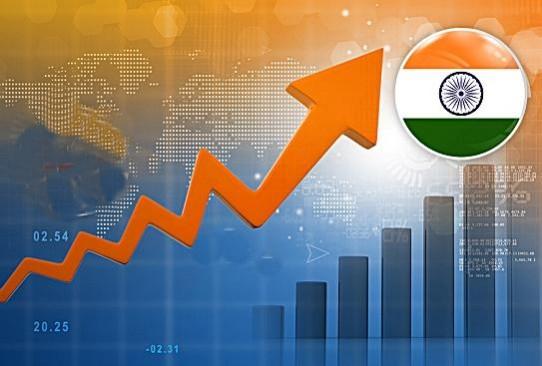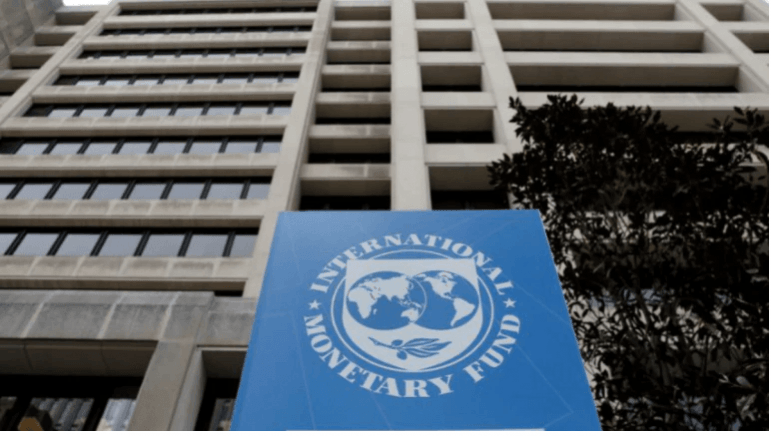IMF Upgrades India’s GDP Growth Forecast to 7% for 2024-25
3 min read
The International Monetary Fund (IMF) has revised India’s GDP growth forecast for the fiscal year 2024-25 to 7 percent, a significant increase from the earlier projection of 6.8 percent. This upward revision is attributed to the improvement in private consumption, particularly in rural India. The IMF’s World Economic Outlook report highlighted that the change reflects the carryover from upward revisions to growth in 2023 and improved prospects for private consumption, especially in rural areas.
The IMF’s forecast for India’s economic growth for 2025-26 remains unchanged at 6.5 percent. This indicates a steady growth trajectory for the Indian economy in the coming years. The report also emphasized that growth in India and China will account for almost half of global growth in 2024, underscoring the significant role these two economies play in driving global economic expansion.
The IMF’s First Deputy Managing Director, Gita Gopinath, noted that growth in major advanced economies is more aligned. The Euro area’s growth is picking up as the US shows signs of cooling after a strong year. The IMF World Economic Outlook put China’s growth rate at 5 percent for 2024 and 4.5 percent for 2025. In contrast, the GDP growth rate of the US has been forecast at 2.6 percent for 2024 and 1.9 percent for 2025.

The report also highlighted the global growth projection, which is expected to be in line with the April 2024 World Economic Outlook (WEO) forecast at 3.2 percent in 2024 and 3.3 percent in 2025. However, the report also pointed out the challenges that governments face due to high debt levels and additional spending pressures from population ageing, climate adaptation, and mitigation.
The IMF report also touched upon the issue of inflation. It stated that services inflation is complicating monetary policy normalization. The upside risks to inflation have increased, raising the prospect of higher for even longer interest rates, in the context of escalating trade tensions and increased policy uncertainty. The report suggested that the policy mix should be sequenced carefully to achieve price stability and replenish diminished buffers.
The IMF’s upward revision of India’s GDP growth forecast comes at a time when the global economy is grappling with several challenges, including stubbornly high inflation, soaring debt levels, escalating trade tensions, and increased policy uncertainty due to elections in various countries. The report underscores the need for stronger near-term efforts to contain spending growth, improve public spending efficiency, reallocate spending to areas that better support opportunities and growth, and optimize tax revenues.

The IMF’s revised forecast for India’s GDP growth is a testament to the resilience of the Indian economy amidst global economic uncertainties. The improvement in private consumption, particularly in rural India, has been a key driver of this growth. This indicates that increased spending in rural areas is driving economic growth, leading to an upward revision of the GDP growth forecast.
Historically, India has demonstrated a robust economic performance despite global economic uncertainties. For instance, during the global financial crisis of 2008, India’s economy showed resilience and managed to maintain a positive growth rate, albeit slower. The current upward revision of the GDP growth forecast by the IMF is a reaffirmation of the strength and resilience of the Indian economy.
The IMF’s upward revision of India’s GDP growth forecast for 2024-25 to 7 percent from the earlier 6.8 percent is a significant development. It reflects the improving private consumption in rural India and the carryover effect from upward revisions to growth in 2023. Despite the global economic uncertainties and challenges, the Indian economy is poised for steady growth in the coming years. However, it is crucial for policymakers to carefully sequence the policy mix to achieve price stability, replenish diminished buffers, and manage the risks associated with high inflation and escalating trade tensions.